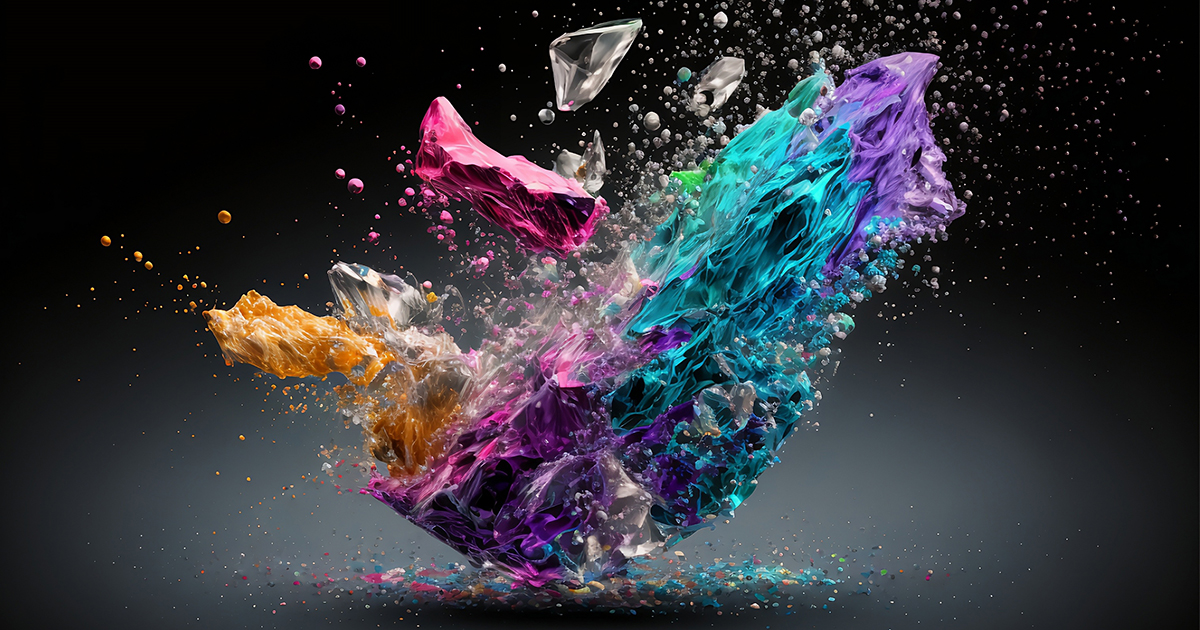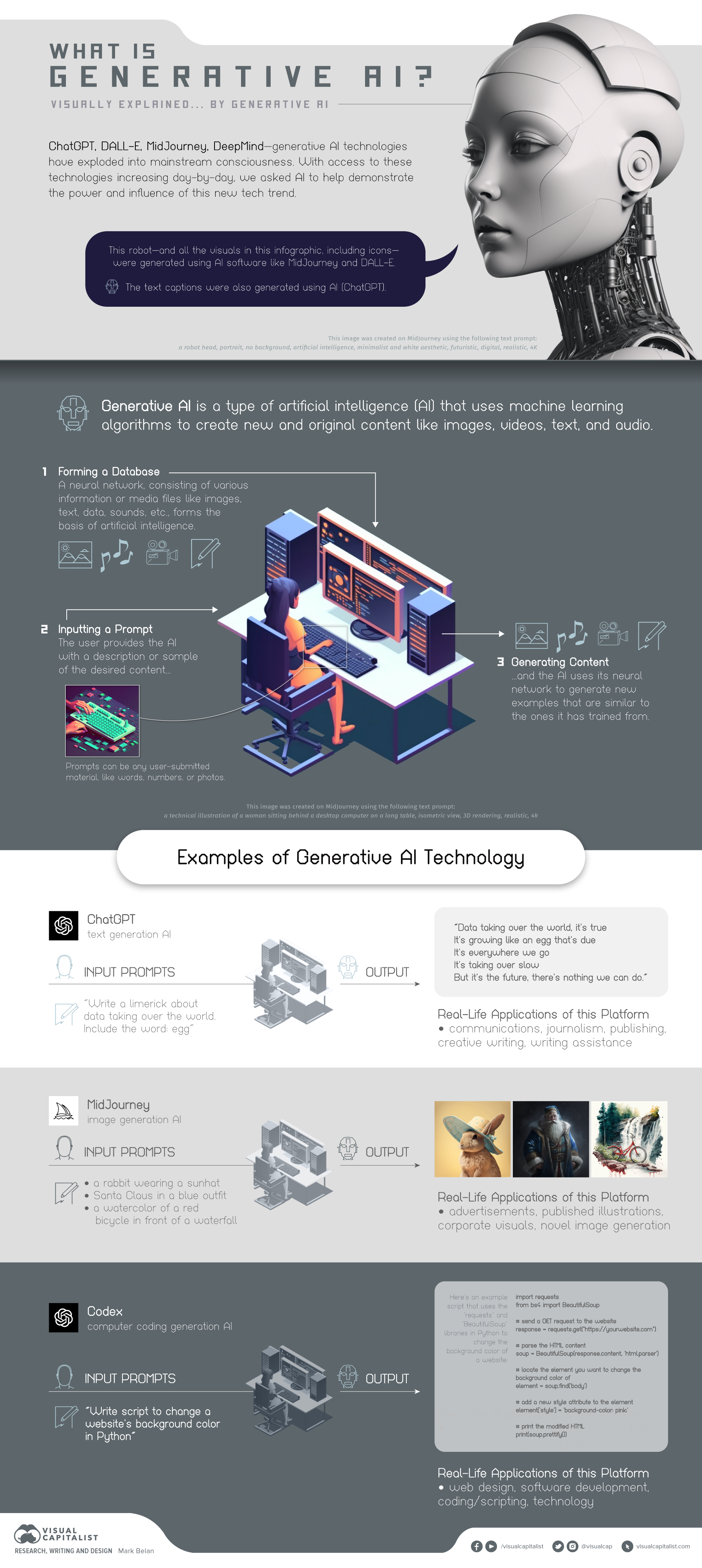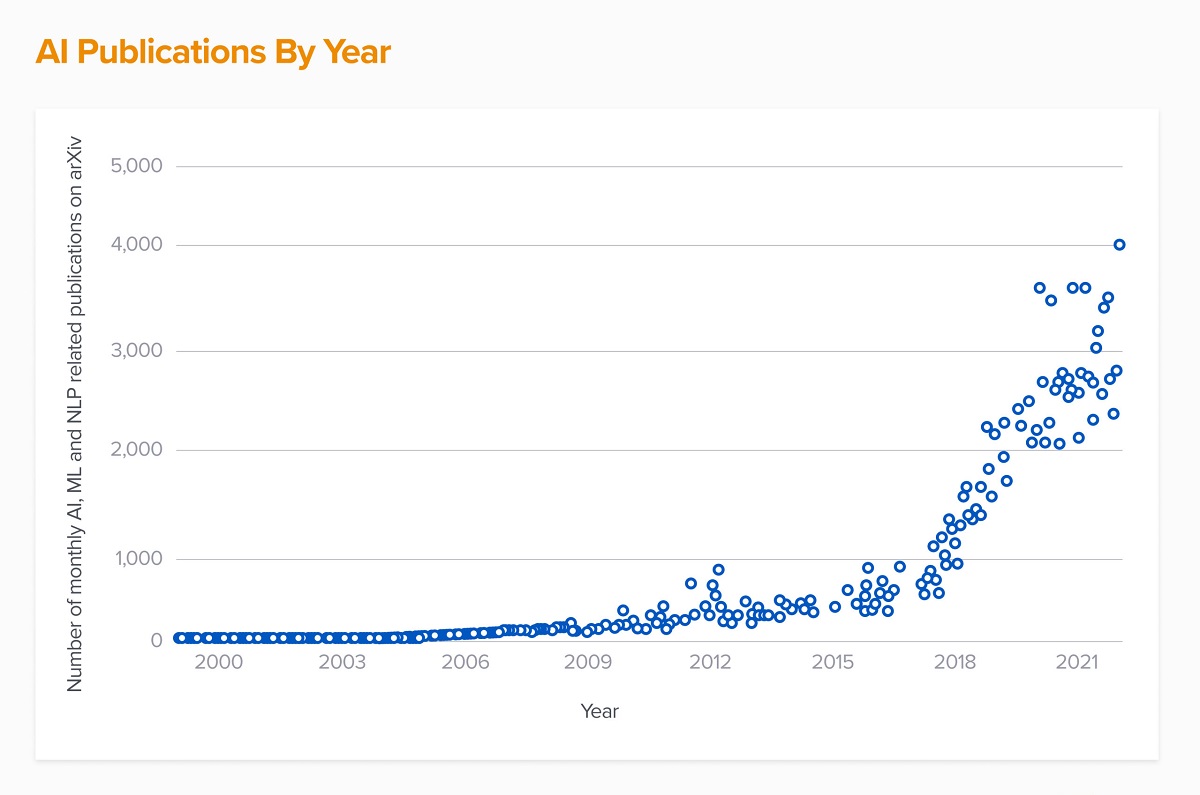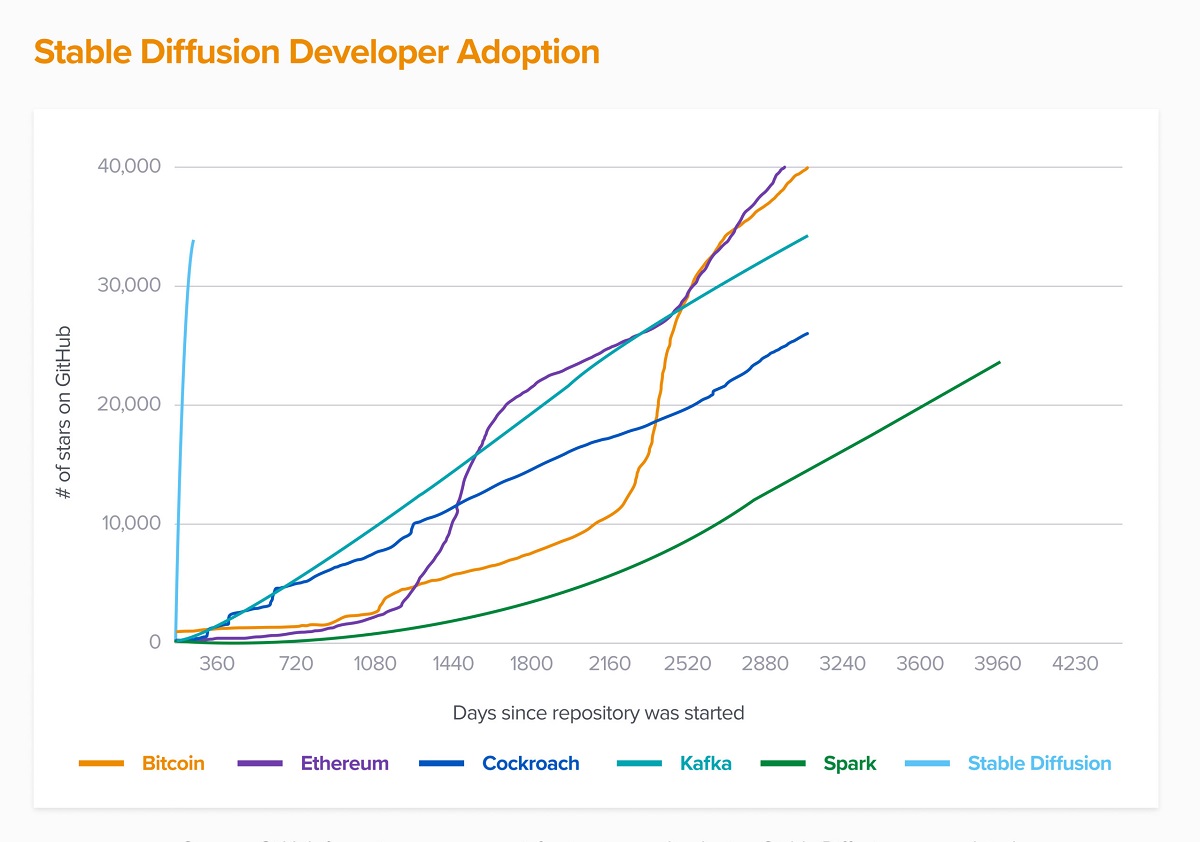
TL;DR
- Venture capitalist firm a16z argues that image-making AI tools are so good now that the economic argument to using it for a host of creative tasks is so compelling it will change the face of the industry.
- Contrary to the common view that creativity will be the last bastion of human ingenuity in the face of automation, it appears to be far easier to automate rather difficult creative tasks than to automate relatively simple programming tasks.
READ MORE: Art Isn’t Dead, It’s Just Machine-Generated (a16z)
The ability to generate music, images, and even video by algorithm may be ethically or even aesthetically controversial, but financially speaking there’s no argument.
In a pure business context, generative AI changes the economic calculus — massively.
That’s according to venture capital firm a16z, a group of investors who normally place their bets on emerging Web3 tech like blockchain, DAOs, crypto and NFTs. Now they report that generative AI is seeing the fastest uptake by developers they’ve ever seen.
In particular, they highlight the popularity of AI tool Stable Diffusion, noting the almost daily launch and funding announcements of start-ups using the technology. Online social networks are being flooded with content created by generative models.
The argument couldn’t be clearer for any company working in the creative arts.
“Any custom artwork or graphic design project will likely take days or weeks, and will cost hundreds, if not thousands, of dollars. Using generative AI is easily four orders of magnitude cheaper and an order of magnitude faster.”
a16z compares the use of generative AI for image creation with programming code. While code generation can benefit from an AI boost, even a very basic functional program still requires reviewing, editing and testing by humans.
It puts this down to the fact that programming code requires absolute accuracy — unlike producing a piece of content where the outcome often depends on serendipity and the blending of ideas that may not be planned.
Generative AI for art is not yet perfect. It will require some degree of user supervision. But the writers say it’s hard to overstate the difference in economics versus coding that’s created by an image model’s ability to mimic an artist’s output.
“For a basic image, entering a prompt and picking an image from a dozen suggestions can be done in under a minute.”
All of which seems to undo the blood, sweat, tears and years of artwork by Michelangelo on the Sistine Chapel, or Van Gogh’s incredible final pictures of wheat fields in Arles.
Their argument is not that computers are necessarily better than humans but, as with so many other automated tasks, “they just kill us on scale.”
a16z doubles down, saying that the impact of generative models on creative work output, such as image generation, is extreme.
“It has resulted in many orders of magnitude improvements in efficiency and cost, and it’s hard not to see it ushering in an industry-wide phase shift.
“The massive improvement in economics, the flexibility in being able to craft new styles and concepts, and the ability to generate complete or nearly complete work output suggests to us that we’re poised to see a marked change across all industries where creative assets are a major part of the business.”
Examples include the ability for generative AI to help with level design for video games. In marketing, “it looks poised to replace stock art, product photography, and illustration.”
Read It on Amplify: The Ways AI Is Going to Revolutionize Filmmaking
Read It on Amplify: Now We Have an AI That Mimics Iconic Film Directors
Read It on Amplify: Can AI Imagery and Video Actually Be Good for the Creator Economy?
There are already applications for AI tools in web design, interior design, and landscape design.
When it comes to Hollywood and the major record labels, a16z makes the point that a large amount of output is formulaic, taking an idea that sold well and re-spinning it across franchises. Its argument for the use of AI is only as cynical as the industry has always been:
“It also may be the case that combining and recombining all prior art may be sufficient for the practical range of creative outputs. The music and film industries, for example, have historically produced countless knock-offs of popular albums and movies. It’s entirely conceivable that generative models could help automate those functions over time.”
The VC company goes further, suggesting that the melting pot of data that an AI is fed on could come up with something unique and fresh.
“It’s not difficult to envision an AI model producing genuinely interesting fusions of musical styles or even ‘writing’ feature-length movies that are intriguing in how they tie together concepts and styles.”
It ends: “We believe generative AI is strictly a positive tool for extending the reach of software — games will be more beautiful, marketing more compelling, written content more engaging, movies more inspiring.”
Next, Review This
Generative AI Explained by AI
Infographic courtesy of Visual Capitalist. For a larger version of the graphic, click on it or click here.

Next, Watch This
Evolving AI Art
AI ART — I DON’T KNOW WHAT IT IS BUT I KNOW WHEN I LIKE IT:
Even with AI-powered text-to-image tools like DALL-E 2, Midjourney and Craiyon still in their relative infancy, artificial intelligence and machine learning is already transforming the definition of art — including cinema — in ways no one could have ever predicted. Gain insights into AI’s potential impact on Media & Entertainment in NAB Amplify’s ongoing series of articles examining the latest trends and developments in AI art:
- What Will DALL-E Mean for the Future of Creativity?
- Recognizing Ourselves in AI-Generated Art
- Are AI Art Models for Creativity or Commerce?
- In an AI-Generated World, How Do We Determine the Value of Art?
- Watch This: “The Crow” Beautifully Employs Text-to-Video Generation



